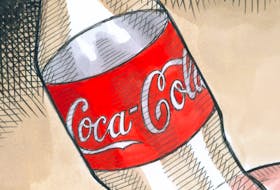Our community has an older than average age demographic and healthy eating is critical to maintaining a full and rewarding life. However, there is a feeling that the increasing cost of eating healthily is placing this objective out of reach.
This may be a valid concern when it comes to the increasing cost of fresh produce in the stores, but there are other essentials of a healthy diet that are within reach and quite affordable. In particular, there's evidence that an inexpensive diet that features omega -3 fatty acids contained in fish oils, can help keep high blood pressure in check, which can otherwise lead to heart attacks and stroke.
It’s known that omega -3 fatty acids can improve the function and elasticity of your arteries; and it makes sense that less stiffer and more elastic arteries can deliver an adequate supply of blood to our critical organs such as the brain at lower levels of blood pressure.
Omega-3 fatty acids are mainly found in cold-water fish such as salmon, mackerel, herring, sardines, and oysters. In the past year I have move away from the “meat and two veg” diet to try out meals built around some of these items.
The local Superstore has a delicious line of smoked mackerel which is rich in Omega -3’s. A package of around four dollars will provide two servings. Three dollars will buy you a tin of Omega-3 rich sardines, and the same for smoked oysters. Served on whole-wheat toast or crackers, along with some fruit slices and greens, they make for a light, nutritious, and inexpensive meal.
And the bonus has been seeing a reduction in my blood pressure in the past year from 140/80 to around 125/80 which I like to believe is due in some part to this change in my diet.
On another front, there is much discussion on the merits of plant versus animal proteins. It’s a fact that animal proteins are nutritionally “complete” with all the essential amino acids, when compared to plant proteins which are said to be “incomplete”.
However, a variety of plant food in one’s diet brings together “complementary” plant proteins to make them as “complete” as animal proteins, as in the case of rice and beans when eaten together.
Top nutritional performers on the list of plant sources of proteins are beans, lentils, chickpeas and tofu. And these sources of proteins really are within the reach of any family budget.
I have come to enjoy a couple of Campbell’s canned soups available at our Walmart and Superstore stores in Amherst. The first is a delicious Moroccan-inspired chickpea and vegetable soup. Equally enjoyable is their lentil and vegetable soup. Both soups sell for around three dollars a can which is good for two servings.
For those of you that may be sceptical about plant proteins supporting healthy, strong bodies, consider the diets of adult male gorillas that can weigh up to 400 pounds and reach a height of six feet standing upright.
They primarily inhabit the tropical forests of sub-Saharan Africa, and the bulk of their diet is fruit, with leaves, seeds, stems, termites and caterpillars making up the difference. Obviously, as strict herbivores there are lots of “complementary” proteins working together here to maintain their impressive bulk.
This all very well I hear you say, but what about the increasing cost of fresh vegetables and fruits in our supermarkets?
While prices are undeniably increasing, we should recognise that a major factor in the high price we pay for so-called fresh produce is the terrible wastage in the store, and in the home. It’s estimated that what we actually consume is no more than a half of what is harvested from the fields, the rest ending up in food-store dumpsters and on to municipal garbage dumps and composters via the home kitchen.
It’s suggested that we would be better off by buying more frozen produce, particularly vegetables and fruit which end up being less costly, superior in quality, and less wasteful than fresh produce.
As David Hoffman, co-CEO of Oxford Frozen Foods tells it, “The flavour and health attributes are flash frozen in the produce, and we would say that they are “fresher than fresh” because of the long supply chain for unfrozen fresh produce, during which time the quality of produce is deteriorating.”
All these benefits apply in purchasing the wide range of vegetables you find in the supermarket freezer section. And there is zero wastage to keep production and consumption costs lower.
Alan Walter is a retired professional engineer living in Oxford. He was born in Wales and worked in Halifax. He spends much of his time in Oxford, where he operates a small farm. He can be reached at [email protected].

![['Did You Know That with Alan Walter']](https://saltwire.imgix.net/did-you-know-that-with-alan-walter-3009037.jpg?cs=srgb&fit=crop&h=568&w=847&dpr=1&auto=enhance%2Cformat%2Ccompress)







